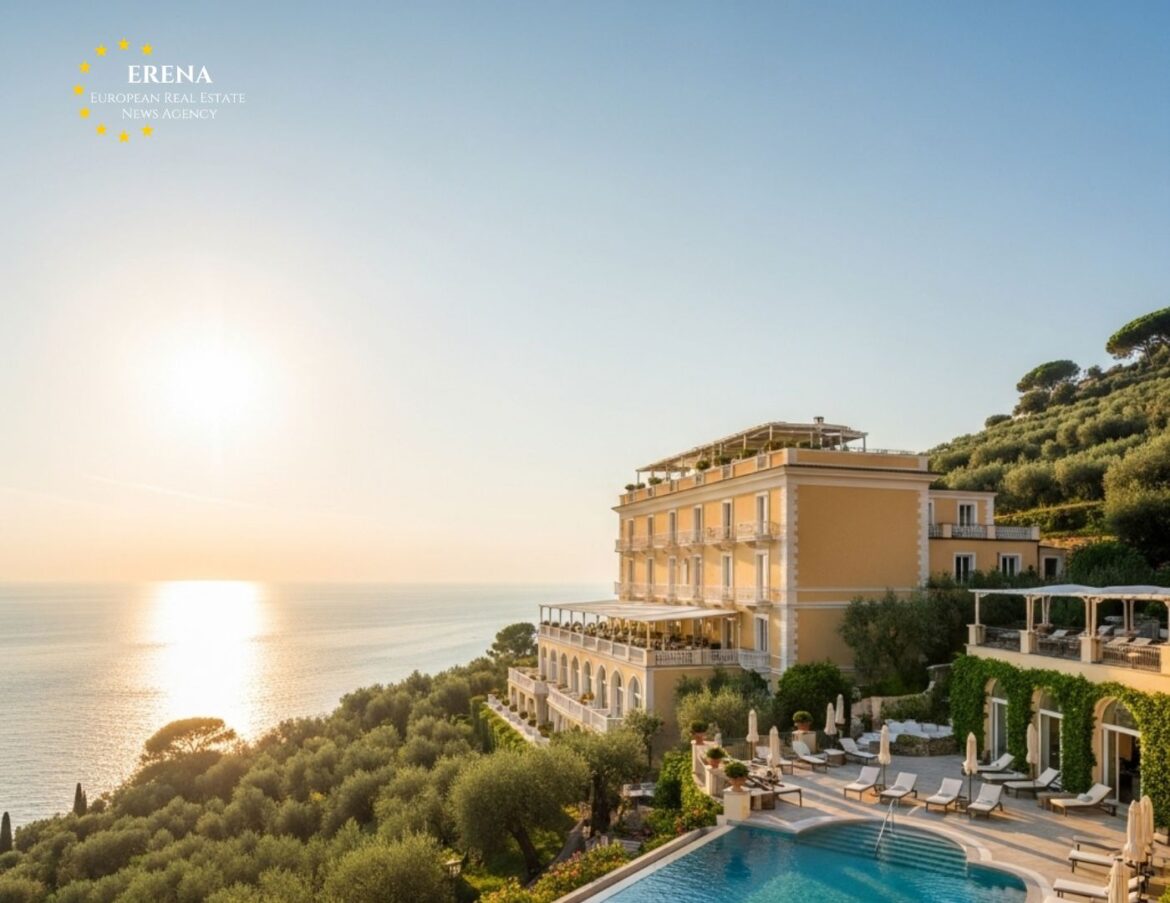In the first half of 2025, investments in Italy’s hotel real estate sector surpassed €1.5 billion, marking a robust resurgence of interest from both domestic and international investors. According to data released by CBRE and Colliers, Italy has positioned itself among the top three European countries for hotel investment activity, trailing only Spain and France. This uptick signals not only a recovery from the pandemic years but also an optimistic outlook for the long-term profitability of the country’s hospitality industry.
A Strong Rebound in the Hospitality Sector
After experiencing a major slowdown in 2020–2021, Italy’s hotel market began a phased recovery in 2022, which strengthened further throughout 2023 and 2024. By mid-2025, average occupancy rates across the country reached 68%, approaching pre-pandemic levels. This rebound has been accompanied by improvements in RevPAR (revenue per available room) and ADR (average daily rate), particularly in Italy’s most visited cities and resort destinations.
The luxury and boutique segments are leading the way, attracting both operational brands and institutional capital. Hotels situated in heritage buildings or in high-demand leisure locations—such as the Amalfi Coast, Tuscany, and Lake Como—have become particularly desirable among investors aiming to capitalize on the post-COVID travel boom.
Notable Deals in H1 2025
Several high-profile transactions underscored the renewed investor confidence:
- Invesco Real Estate purchased a luxury hotel in central Milan for €140 million, strengthening its footprint in southern Europe.
- Hotusa Group, one of Spain’s largest hotel operators, entered the Italian market with the acquisition of three hotels in Florence and Verona for €95 million.
- Abu Dhabi Investment Authority (ADIA) completed a €180 million acquisition of a five-star beach resort in Sardinia, with plans to reposition it under a premium international brand.
- Blackstone invested €230 million in the redevelopment of a historic palazzo in Venice into a flagship hospitality destination.
- Cassa Depositi e Prestiti (CDP), Italy’s national development bank, allocated €120 million to enhance regional tourism infrastructure through hotel investments in Rome and Sicily.
These transactions reflect a well-diversified investment landscape, with participants ranging from sovereign wealth funds and real estate private equity firms to family offices and global hotel chains.
Key Investment Locations
Investor interest in Italy continues to concentrate around:
- Rome – A top-performing city for both business and leisure tourism, Rome saw the highest number of transactions in H1 2025. Prime hotel rooms in the city center now average €420,000 per key.
- Milan – As Italy’s financial capital and a center for fashion and events, Milan remains a magnet for investors seeking upscale urban hotels.
- Florence – Heritage buildings and boutique hotels continue to attract foreign capital.
- Venice – Despite strict conservation regulations, demand for high-end accommodations remains strong.
- Coastal and rural destinations – Locations such as Sardinia, Puglia, and Tuscany are drawing attention for resort-style developments.
Notably, southern Italy is becoming more prominent as investors seek lower acquisition costs and untapped tourism potential.
Pricing and Return Metrics
Average hotel acquisition pricing in H1 2025 includes:
- €300,000–€450,000 per room in Rome, Milan, and Florence city centers.
- €200,000–€350,000 per room in second-tier cities like Bologna, Genoa, and Verona.
- €120,000–€250,000 per room in resort or countryside markets.
Gross yields across Italy’s hotel market range from 4.5% to 6.5%, depending on location, asset class, and branding. Properties in high-demand zones tend to offer lower yields but are considered more resilient and capital-appreciative.
Market Drivers Behind the Growth
Several macro- and microeconomic factors are supporting hotel investment growth:
- Tourism Recovery – Italy welcomed 34+ million international visitors in the first half of 2025, up 12% from the same period in 2024.
- Inflation Protection – Hotels offer flexible pricing power, which helps hedge against inflation.
- Value-Add Opportunities – Many acquisitions involve renovation or repositioning strategies to improve ESG compliance and revenue performance.
- Luxury Travel Demand – The global trend toward premium travel is bolstering demand for five-star and wellness-oriented properties.
- Transport Infrastructure – Expanded air and rail links are increasing accessibility to Italy’s secondary and tertiary markets.
Challenges to Navigate
Despite positive fundamentals, investors must consider certain risks:
- Limited Asset Availability – Especially in historic urban centers, where many properties are held long-term by local families.
- Lengthy Permitting – Bureaucratic delays in zoning and construction approvals can impact redevelopment timelines.
- Construction Costs – Inflation in labor and materials is driving up redevelopment budgets.
- Seasonal Revenue Cycles – Particularly in resort destinations, income may fluctuate significantly across quarters.
- Compliance Pressure – Stricter environmental regulations and ESG expectations require additional capital planning.
Outlook for the Remainder of 2025
According to forecasts from Savills and Cushman & Wakefield, total hotel investment in Italy could exceed €3 billion by the end of 2025, assuming continued transaction momentum.
Expected developments in H2 2025 include:
- Strategic acquisitions in Tuscany’s coastline resort areas.
- Further expansion of Middle Eastern and Asian investment into major Italian markets.
- Increased portfolio consolidation by global hotel operators such as Marriott, Accor, and Hyatt.
With stable tourism demand and improving fundamentals, Italy is well-positioned to maintain its status as a core destination for hotel real estate investment in Europe.
Conclusion
Italy’s hotel investment market is experiencing a strong and broad-based revival. With over €1.5 billion deployed in just six months, 2025 is shaping up to be one of the most active years in recent memory. The combination of solid tourist numbers, compelling redevelopment opportunities, and growing global interest in luxury leisure has reinforced Italy’s appeal among investors.
While regulatory and operational challenges remain, Italy’s mix of cultural heritage, tourism resilience, and value-added potential continues to attract institutional and private capital alike. As the second half of the year unfolds, all signs point to sustained growth and diversification in the country’s dynamic hospitality investment landscape.

